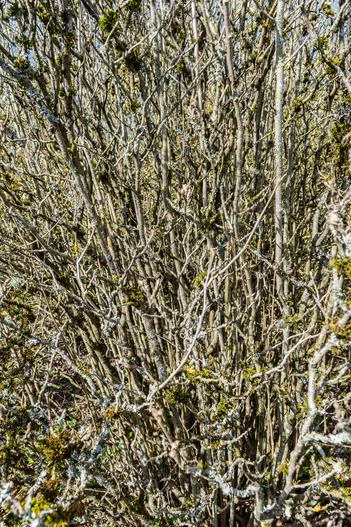Large Fothergilla
(Fothergilla latifolia)
Large Fothergilla (Fothergilla latifolia)
/
/

Krzysztof Golik
CC BY-SA 4.0
Image By:
Krzysztof Golik
Recorded By:
Copyright:
CC BY-SA 4.0
Copyright Notice:
Photo by: Krzysztof Golik | License Type: CC BY-SA 4.0 | License URL: https://creativecommons.org/licenses/by-sa/4.0 | Uploader: Tournasol7 | Publisher: Wikipedia Commons




Estimated Native Range
Climate Requirements
| • Precipitation | 46" - 55" |
| • High Temp. | 73°F - 90°F |
| • Low Temp. | 23°F - 33°F |
Summary
Fothergilla latifolia, commonly known as Large Fothergilla, is a deciduous shrub native to the southeastern United States, particularly found in the Appalachian Mountains. It thrives in a variety of woodland settings, including moist, acidic soils in forest clearings and along stream banks. This species is often confused with Fothergilla gardenii, which is smaller in stature. Fothergilla latifolia typically grows to a height of 6-10 feet (1.8-3 meters) and a similar width, featuring a rounded, dense form. Its flowers are particularly notable, with fragrant, creamy white, bottlebrush-like blooms appearing in early to mid-spring before the leaves. The flowers are quite showy and attract pollinators. In the fall, the foliage turns to spectacular shades of yellow, orange, and red, providing multi-season interest.
Large Fothergilla is valued for its ease of maintenance, adaptability to a range of soil types, and exceptional fall color. It is commonly used in residential landscapes for foundation plantings, mixed borders, and naturalistic woodland gardens. It prefers full sun to part shade and requires medium amounts of water, with well-drained, acidic soil being ideal. While it can tolerate clay, loam, or sandy soils, it is essential to avoid waterlogged conditions. There are no major disease or pest issues, but leaf spot and powdery mildew can occasionally occur. It is not known for aggressive roots or invasiveness.CC BY-SA 4.0
Large Fothergilla is valued for its ease of maintenance, adaptability to a range of soil types, and exceptional fall color. It is commonly used in residential landscapes for foundation plantings, mixed borders, and naturalistic woodland gardens. It prefers full sun to part shade and requires medium amounts of water, with well-drained, acidic soil being ideal. While it can tolerate clay, loam, or sandy soils, it is essential to avoid waterlogged conditions. There are no major disease or pest issues, but leaf spot and powdery mildew can occasionally occur. It is not known for aggressive roots or invasiveness.CC BY-SA 4.0
Plant Description
- Plant Type: Shrub
- Height: 6-12 feet
- Width: 6-10 feet
- Growth Rate: Moderate
- Flower Color: White
- Flowering Season: Spring
- Leaf Retention: Deciduous
Growth Requirements
- Sun: Full Sun, Part Shade
- Water: Medium
- Drainage: Medium, Fast
Common Uses
Bird Garden, Border Plant, Butterfly Garden, Deer Resistant, Drought Tolerant, Fragrant, Low Maintenance, Showy Flowers, Water Garden
Natural Habitat
Moist, acidic soils in forest clearings and along stream banks in the southeastern United States, particularly the Appalachian Mountains
Other Names
Common Names: Broadleaf Witch Alder, Alabama Witch Alder, Alabama Fothergilla
Scientific Names: Fothergilla latifolia, Fothergilla alnifolia var. major, Fothergilla latifolia, Fothergilla major, Fothergilla major, Fothergilla monticola
GBIF Accepted Name: Fothergilla latifolia